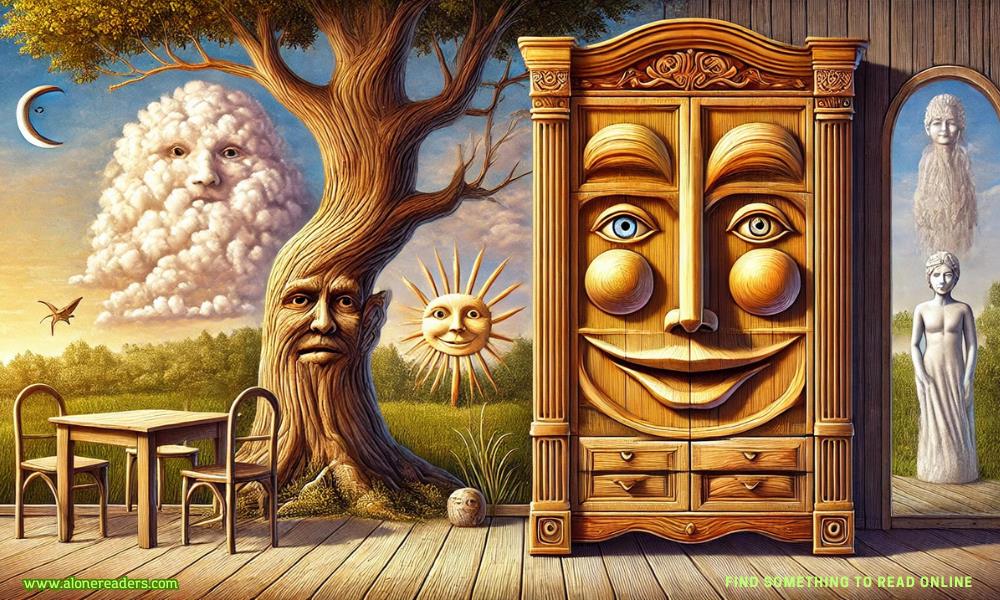
Pareidolia is a captivating mental phenomenon that highlights the human brain’s remarkable ability to perceive patterns. It refers to the tendency to see faces, animals, or other recognizable shapes in completely unrelated or random objects, such as a cloud, a tree bark pattern, or even a piece of burnt toast. This phenomenon has intrigued scientists, artists, and psychologists alike, offering insights into how the human mind works to find meaning in the seemingly meaningless.
The roots of pareidolia lie in the brain's preference for familiarity and its reliance on pattern recognition. As a survival mechanism, humans have evolved to quickly recognize faces and other significant shapes, even in environments where they might not be immediately apparent. This rapid recognition ability was critical in the past for identifying threats, such as predators hiding in foliage, or spotting friendly faces in a crowd. Over time, this mechanism became so refined that it often overcompensates, identifying patterns where none truly exist.
One of the most common examples of pareidolia is seeing faces in inanimate objects. A car's headlights and grille might resemble a smiling face, while the arrangement of knobs and buttons on an appliance might appear as a surprised or grumpy expression. This happens because the human brain has a specialized area called the fusiform face area, which is dedicated to recognizing faces. This area is so sensitive that it activates even when the resemblance to a face is only superficial.
Pareidolia is not just limited to faces; it extends to a wide array of interpretations. People often see animals in the clouds, landscapes on the surface of the moon, or religious imagery in mundane objects. Famous examples include the “Face on Mars,” a rock formation that resembled a human face when photographed by a NASA spacecraft, and the grilled cheese sandwich that appeared to bear the image of the Virgin Mary. Such instances not only capture public fascination but also raise questions about how personal beliefs and cultural contexts influence what individuals see.
Interestingly, pareidolia is not a sign of a flawed or overly active imagination. It is, in fact, a testament to the efficiency and adaptability of the human brain. The phenomenon is a byproduct of the brain’s attempt to organize chaotic or random visual stimuli into something meaningful. This ability reflects how deeply ingrained pattern recognition is in human cognition, playing a role in creativity, problem-solving, and even technological advancements like artificial intelligence.
Artists and designers have long been inspired by pareidolia. Surrealist painters like Salvador Dalí often incorporated ambiguous or hidden images into their work, encouraging viewers to find their own interpretations. This interplay between deliberate creation and accidental perception demonstrates how pareidolia can spark creativity and provide a deeper connection between art and observer. Modern architects and industrial designers also use pareidolia intentionally, creating structures or products that subtly mimic human or animal features to evoke emotional responses.
While pareidolia is generally considered a harmless and fascinating aspect of human perception, it can occasionally lead to misinterpretations or superstitions. Throughout history, people have often attributed mystical or divine meanings to patterns they perceived in the environment. A peculiar rock formation or an unusual shadow could easily be interpreted as an omen or a message from a higher power. Even today, viral images of seemingly miraculous appearances spark debates and intrigue, showcasing how deeply pareidolia resonates with human curiosity.
Pareidolia also plays a role in technology, particularly in the development of machine learning and artificial intelligence. AI systems are trained to recognize faces, objects, and patterns in much the same way humans do. However, these systems can also fall victim to pareidolia-like errors, identifying patterns or objects in images where none exist. This shared tendency reveals how human cognitive processes have inspired technological advancements and how our understanding of pareidolia can improve AI’s accuracy and reliability.
Scientists continue to study pareidolia to unravel its deeper implications. Research has shown that people with high levels of creativity or an inclination toward abstract thinking are more likely to experience pareidolia. This finding suggests a link between the phenomenon and the way individuals process and interpret information. Moreover, pareidolia offers insights into mental health and neurological conditions. For instance, it is more pronounced in certain psychological disorders, such as schizophrenia, where patients may perceive patterns or connections that others do not.
In a broader sense, pareidolia serves as a reminder of the incredible complexity and adaptability of the human mind. It demonstrates how our perception is shaped not just by the external world but also by our internal thoughts, memories, and experiences. By transforming random stimuli into familiar shapes and meanings, pareidolia bridges the gap between reality and imagination, making the ordinary extraordinary.
Ultimately, pareidolia is a phenomenon that connects us to the world in a uniquely human way. Whether it’s spotting a smiley face on a pancake or marveling at an animal-shaped cloud, these moments of recognition bring a sense of wonder and creativity to everyday life. They remind us that the brain’s quest for meaning is a fundamental part of what makes us human, enriching our experiences and deepening our connection to the world around us.